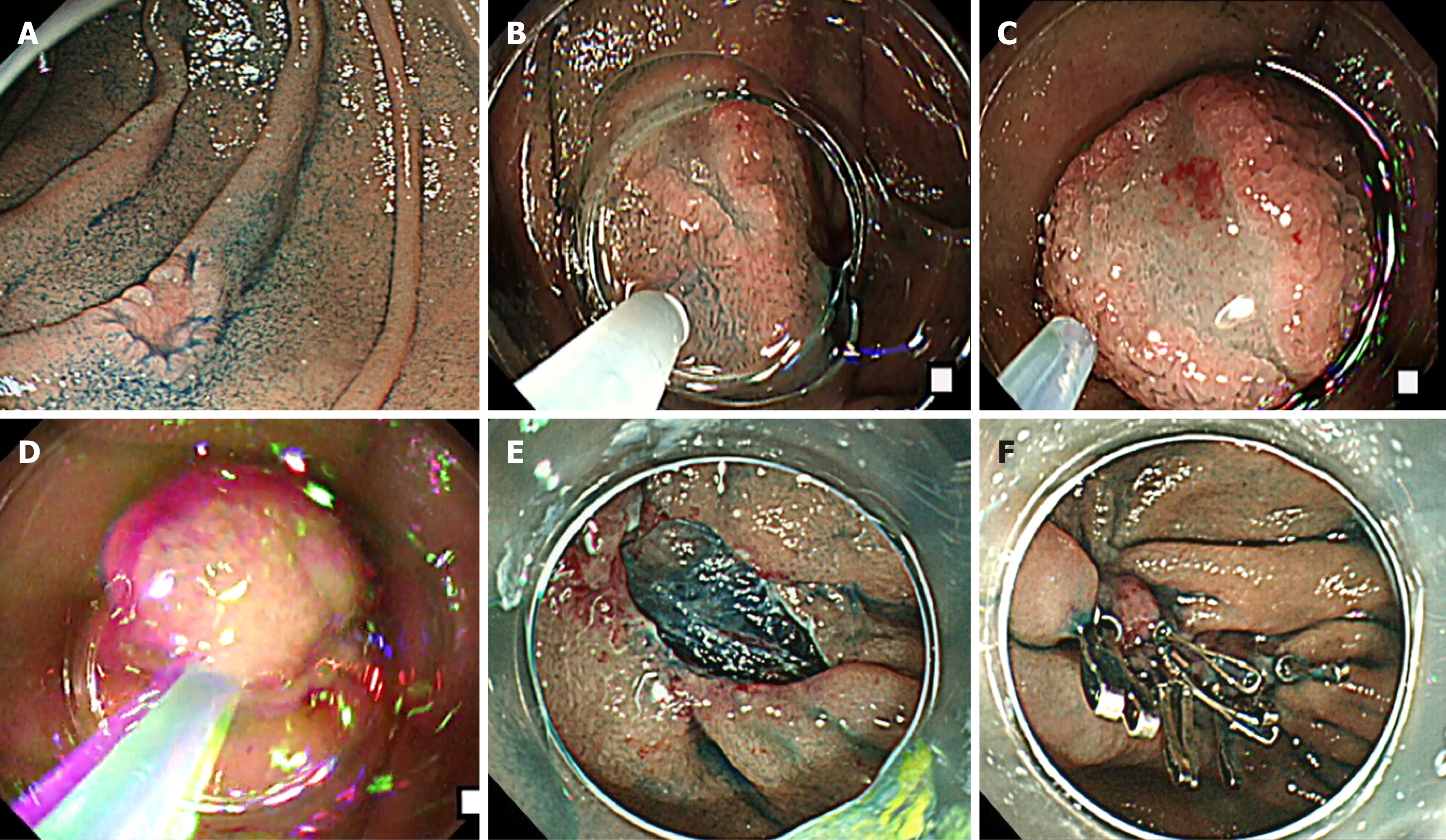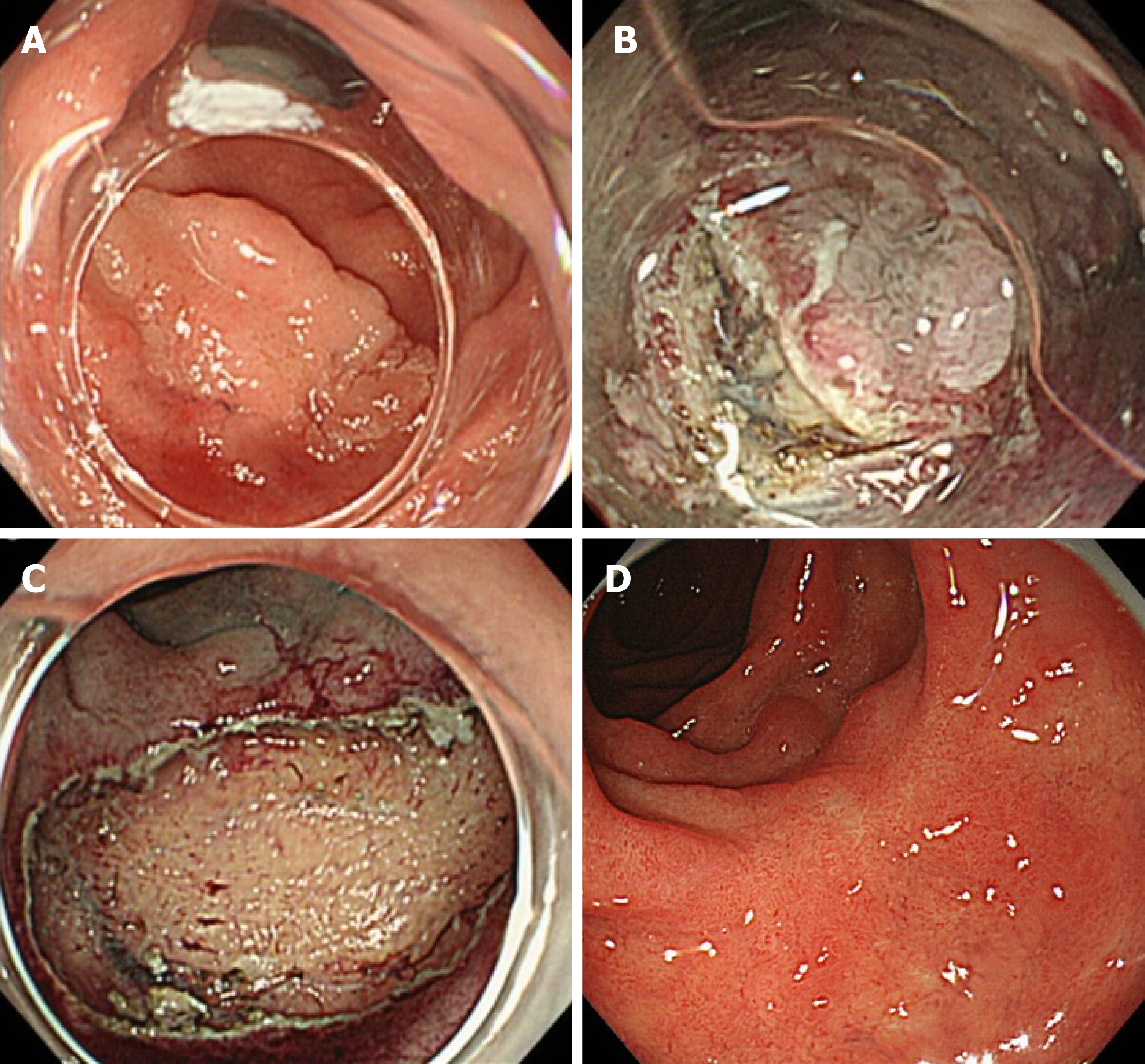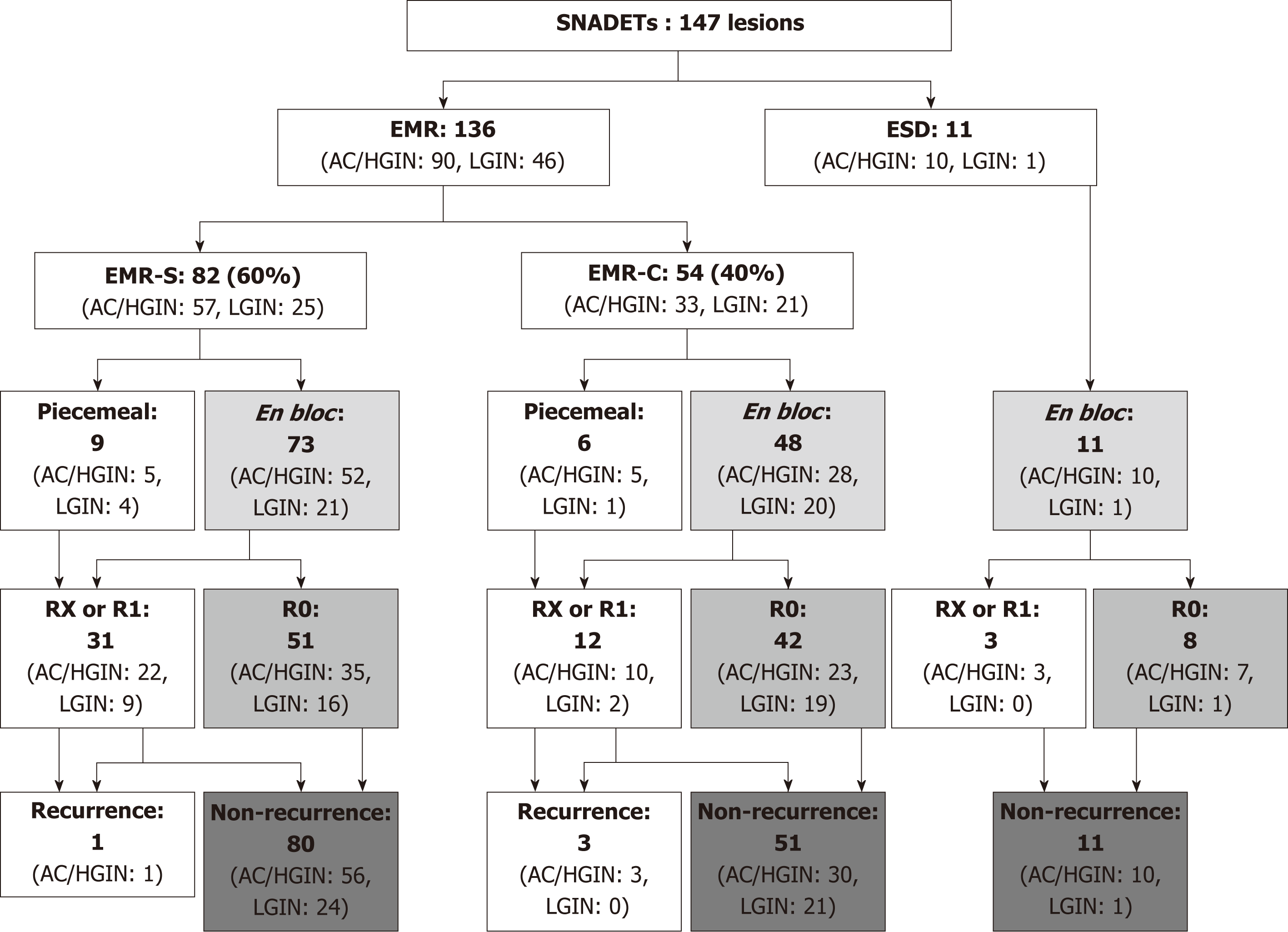Copyright
©The Author(s) 2019.
World J Gastroenterol. Feb 14, 2019; 25(6): 707-718
Published online Feb 14, 2019. doi: 10.3748/wjg.v25.i6.707
Published online Feb 14, 2019. doi: 10.3748/wjg.v25.i6.707
Figure 1 The cap-assisted endoscopic mucosal resection method of superficial non-ampullary duodenal epithelial tumor.
This is the “suck and shake” technique. Type 0-IIc lesion, 10 mm × 5 mm, mucosal carcinoma, cut-end negative. A: Indigo carmine spraying view. Depressed-type lesion was located in the second portion of the duodenum; B: Injecting the glycerol into submucosal layer; C: Sucking the lesion; D: Shaking the lesion to prevent muscle layer involvement; E: Ulcer findings just after lesion removal. The lesion was resected en bloc, and there was no bleeding or perforation in the ulcer just after the procedure; F: Closing the ulcer floor completely by clip to prevent delayed bleeding and perforation.
Figure 2 The endoscopic submucosal dissection method of superficial non-ampullary duodenal epithelial tumors.
Type 0-IIa lesion, 25 mm × 25 mm, mucosal carcinoma, cut-end negative. A: Flat, elevated-type lesion was located in the second portion of the duodenum; B: Performing circumferential incision and submucosal dissection; C: Ulcer findings just after lesion removal. The lesion was resected en bloc, and there was no bleeding or perforation in the ulcer just after the procedure; D: After 2 mo of endoscopic submucosal dissection, the wound became a scar, and no residual tumor was found.
Figure 3 The study flow diagram based on the therapeutic outcomes of endoscopic resections.
EMR: Endoscopic mucosal resection; ESD: Endoscopic submucosal dissection; EMR-S: Conventional method with snare; EMR-C: Cap-assisted EMR; R0: En bloc resection with tumor-free margins histopathologically; RX: Involvement of the horizontal and/or vertical margin could not be assessed histopathologically; R1: Involvement of the horizontal and/or vertical margin histopathologically; AC: Adenocarcinoma; HGIN: High-grade intraepithelial neoplasia; LGIN: Low-grade intraepithelial neoplasia.
- Citation: Hara Y, Goda K, Dobashi A, Ohya TR, Kato M, Sumiyama K, Mitsuishi T, Hirooka S, Ikegami M, Tajiri H. Short- and long-term outcomes of endoscopically treated superficial non-ampullary duodenal epithelial tumors. World J Gastroenterol 2019; 25(6): 707-718
- URL: https://www.wjgnet.com/1007-9327/full/v25/i6/707.htm
- DOI: https://dx.doi.org/10.3748/wjg.v25.i6.707











